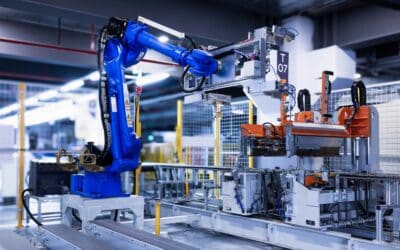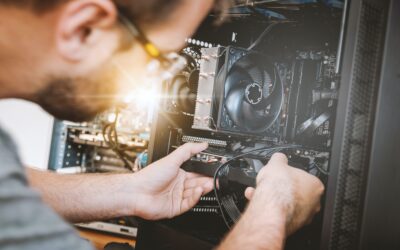When the factory siren blares early in the morning
And the time clock groans with relish as it punches the clock
The neon sun shines in the assembly hall
And the fork-lift operator boasts with the stacking forkYes, then we will spit into our hands again
We are increasing the gross national product!(Geier Sturzflug)
No song illustrates increasing productivity and the joy of it as much as ” Bruttosozialprodukt” by Geier Sturzflug. We can almost picture the workers from this song working with verve on an ever faster cycle time, an ever higher productivity.
And today?
In 2021, singing employees on the assembly line will no longer be a reality for various reasons. Generational change and a shortage of skilled workers have long since moved industrial production towards automation. Today, cycle time depends less and less on motivated workers and more on technical equipment. Often a critical bottleneck: the machine vision systems used.
How are cycle times and Machine Vision related in production? How can bottlenecks be avoided and what are the levers for doing so? We want to get to the bottom of these questions in this article.
Cycle time – central adjustment screw of production
First of all, the cycle time in industry stands for the “time in which a unit of quantity is completed so that the flow system achieves the target quantity output” (quote from the REFA Association according to Wikipedia). This means that the result quantity of a production station or an entire plant can be viewed with the help of this figure. It is calculated from the daily net working time divided by the number of units per working day.
In times of manual production – which was often still the usual variant in 1983 when ” Bruttosozialprodukt” was published – the cycle time resulted from piecework. It was not uncommon for workers to be paid by the piece.
However, increasing efficiency demands and a shortage of skilled workers have led to these tasks being increasingly (partially) automated in recent years. The cycle time is then no longer a specification for human tasks, but specifies how quickly a partial step must be carried out in order to avoid transition losses and bottlenecks.
What does Machine Vision have to do with cycle time?
Whether for the automated handling of workpieces or for inspecting parts: Machine Vision is an integral part of many automation processes. Only through the sensors and software used are robots and machines able to correctly grasp and process workpieces.
Unfortunately, capturing objects as quickly and precisely as possible via machines is not as easy as one might think:
- Does the environment provide enough light to see the object?
- Does the object reflect or gleam?
- Is it moving and could be captured out of focus as a result?
- Is the resolution sufficient to actually recognise the objects?
- Are there individual circumstances that need to be taken into account?
This complexity of machine vision has led to cumbersome and potentially unreliable systems in the past. Fortunately, however, the technology has made great strides in recent years – today’s systems can have a much better record here. This is also already having an impact on production cycle time.

Due to the high cycle speed, the workpiece is not visible for a normal shot. The connected machine vision system must use correspondingly faster shutter speeds.
To understand even better how Machine Vision and cycle time influence each other, it is worth taking a look at the two components of Machine Vision:
Image Acquisition and cycle time
Before the image data can be processed, a sensor or camera must first capture it. Accordingly, what matters here is how quickly a workpiece can be reliably positioned in front of the sensor and how long the recording must take for a precise image. The recording situation must therefore be as bright as possible to avoid noise and image errors. In dark production halls, additional light sources are therefore often used, e.g. diffuse light via LumiLED. This allows the necessary exposure time to be decisively reduced.
For moving parts, e.g. on a conveyor belt, this is a decisive improvement: only in this way can the parts be recorded and processed without motion blur on the belt. Even advancing by three pixels can render the result unusable for precise measurements. Sufficient brightness – and ideally also a fast lens in the sensor – are indispensable here.
Image processing and cycle time
In order to be able to use the accumulated image data in a meaningful way, it must be processed. Many machine vision systems rely on so-called vision controllers, which often run on edge computing. For the fastest possible transport there, a fast and reliable transmission is needed: In Machine Vision, this is the GigE Vision standard via Ethernet. These cable connections achieve transmission speeds of up to 1 Gb/s.
If the data is also sent to a powerful vision controller that can process the data quickly, and if the software is also designed for high performance, the results are immediately sent to the robot controller or process control. Depending on the task, the calculation can take place in fractions of a second – valuable milliseconds for the cycle time.
Machine Vision leaves behind its reputation as the bottleneck of production
No matter whether Machine Vision is used in bin picking, for quality inspection or for the detection of workpieces: The fact that the vision component has hindered operations is a thing of the past with the new generation systems. Clearing out crates and bulk goods within a specified time limit or inspecting parts on the assembly line before they have arrived at the next production step thus no longer put automated production to the test.
Perhaps the next step will be an additional radio in the vision system: then robots and co. can sing again “… Yes, then we will spit into our hands again…”.



